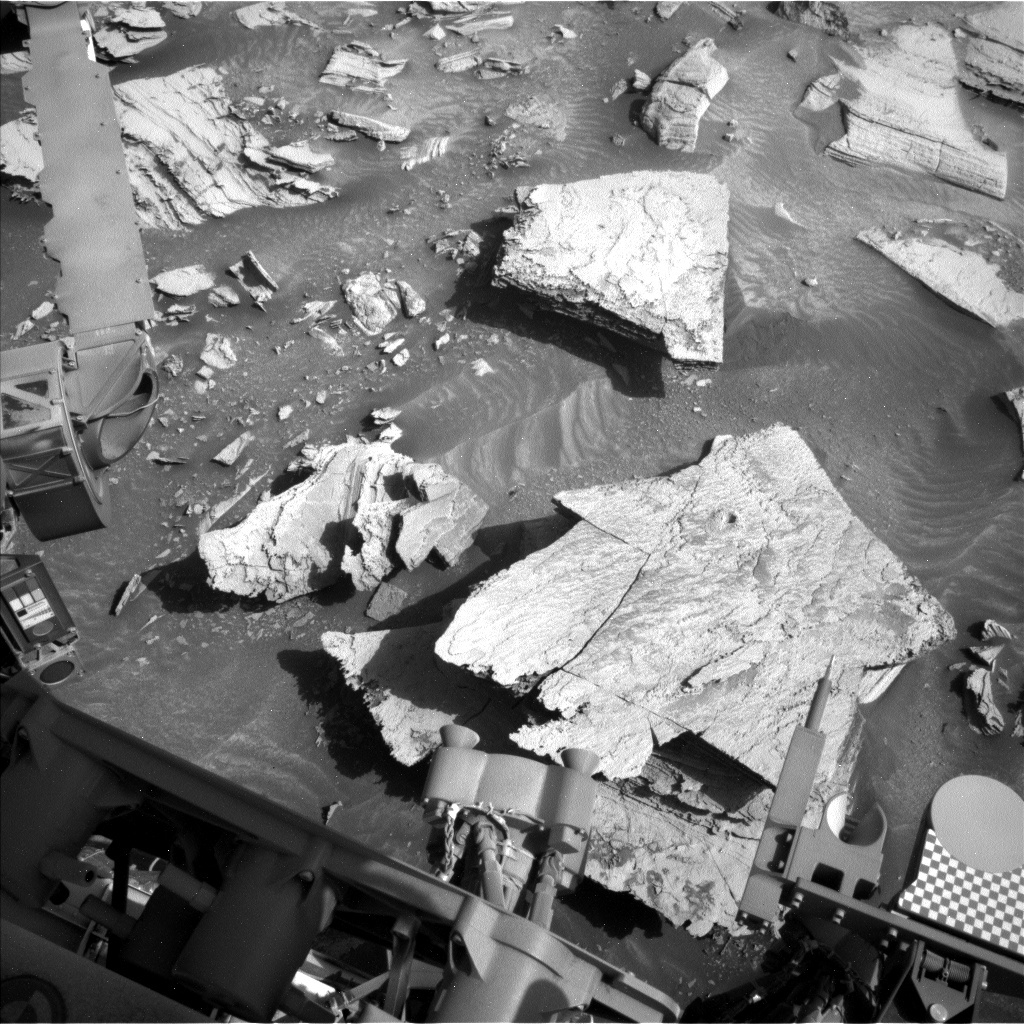Earth planning date: Monday, February 26, 2024
The planning team came in after the weekend to see another beautiful Martian drill hole on the target Mineral King! Mineral King is named after a silver mining district in Sequoia National Park, California. This was a pretty odd-looking rock, with the big overhanging ledges and several different colors, so we were all pretty anxious to see the drilling results. Fortunately, the rock was strong enough to drill without the rock layers breaking apart. However, it was also hard enough to slow down our drill progress and require percussion near the end. As a result, this hole is on the shallow side, meaning we may not have collected as much sample to analyze. However, we have had successful sample analyses after similarly shallow drill holes (like Edinburgh back on sol 2710) and our portion characterization does show we have sample, so the team is optimistic and going forward with dropping off sample to CheMin today. We prefer to do the sample drop-off as close as possible to when we’ll be doing the CheMin analysis, which is at night during cooler temperatures. While we are waiting for the sun to go down we are doing some targeted science and imaging.
First thing, ChemCam is taking a LIBS observation of the “Mount Sill” target, which is a dark-toned platy layer on the same rock as Mineral King. ChemCam is also taking both LIBS and passive observations on the Mineral King drill tailings and drill hole wall. Curiosity will then turn attention to the atmosphere, taking a Navcam line-of-site image of the atmospheric dust within the crater and a large dust devil survey. Before taking a nap, there is a Navcam image of the CheMin inlet prior to dropping off sample. After the nap, we wake up to do a high-temperature diagnostic with the M100 filter wheel, followed by a Mastcam solar tau and another Navcam line-of-sight image to look at dust in the atmosphere. After another nap, Curiosity wakes up in the evening to drop off some drill sample to CheMin. We are dropping off two sample “portions” to CheMin, which involves rotating the drill bit backwards for less than a second. Overnight, CheMin will analyze the sample and then dump it out. We should have results of the analysis by planning on Friday, when we will find out if Mineral King will live up to its name (though we probably won’t find any actual silver) and we’ll decide if we want to proceed to drop sample to SAM.
On the second sol of the plan, we read out the data from CheMin and do some more imaging and remote science. ChemCam takes a LIBS observation of the “South Guard” target, which is a gray-toned platy target also on the Mineral King rock, giving us the ability to compare the different colored areas. ChemCam also is taking a 40-frame RMI extension of the mosaic of Fascination Turret on the upper Gediz Vallis ridge. Mastcam then takes ChemCam follow-up images, one of South Guard and Mount Sill and an 18-frame mosaic of the upper Gediz Vallis ridge RMI target. Mastcam also takes a 48-frame extension of the mosaic on Texoli, which is a butte that shows eroded sedimentary structures, and an observation on the Marker Band following up on a ChemCam observation from the weekend. Finally, we take the post-drop-off Navcam image of the CheMin inlet and a dust devil movie. For the rest of the sol, Curiosity gets to rest and recharge in preparation for hopefully doing SAM activities in the rest of the week.
Written by Ashley Stroupe, Mission Operations Engineer at NASA's Jet Propulsion Laboratory



































